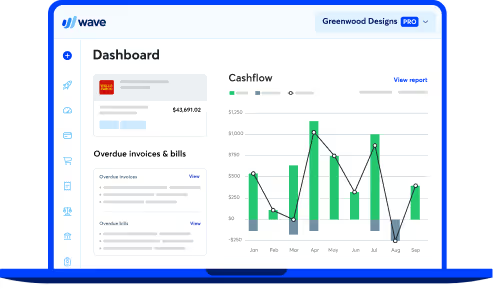
How to write a business plan
This article is part of our How to start a business playbook, which covers topics like finding the right business idea, writing a business plan and finding small business loans.
In today’s world, some believe that the best business plan is no business plan at all. Advocates of the “lean startup” and “fail fast” methods of business say that acting—and acting quickly—is far more powerful than writing up a lengthy business plan.
The truth is, though, that drawing up a business plan is an invaluable exercise for your business. In an extensive study, Harvard Business Review found that entrepreneurs with formal business plans were 16% more likely to build viable businesses. Similar research from Palo Alto software found that those with a business plan were nearly twice as likely to grow their businesses and secure outside funding (like a small business loan or venture capital investment.)
More than just a roadmap for the future (which can change at any time), a business plan is a vital exercise to help clarify your business idea and what it will take to make it a reality. That’s why the process of putting together a business plan is just as important as the end product itself.
In this chapter, we’ll talk about:
- Questions your plan should answer and why those answers matter.
- The six main elements of a business plan.
- Best practices for every business plan (plus tools and templates to help you build it.)
- How to turn your business plan into an elevator pitch that will win over investors, lenders, and new employees alike.
Let’s get started!
Questions every business plan should answer
As a rule, business plans are very tactical. They outline clear steps and goals to take your business from idea to growing company. A business plan should aim, more broadly, to address a handful of overarching questions.
Grasshopper Academy talked to several business experts about what every business plan should say. Their answers showed a few common threads that all business plans should weave throughout. These are the questions you need answers to and the answers that investors, lenders, and other readers of your business plan are looking for.
- Why are you in business? Talk about your mission. What drives you and the business— beyond revenue and profits?
- What does the market look like? Discuss who your potential customers are, and what pain points they have that only you can solve. Analyze your competition—their business, their performance, and their weaknesses. How does your business idea fit into the market in relation to them?
- What will you do? Detail how your business is different from what’s out there. Explain what you’ll offer, how you’ll solve customer problems, and how the market will respond to your business. How will the industry change when you enter it?
- How will you grow? This is where you’ll specify financials, projections, and where you expect the company to be in the future. You should also include plans for how the business will scale. Who will you need to hire and what will their responsibilities entail?
- What do you need? Finish with your ask. Talk about what you need (financial investment, a loan, a partnership, etc), how you’ll use it, and what you’re offering in return (equity, collateral, etc). Where will that investment take your business?
Why the answers matter
Answering those five questions helps to clarify what your business is and why you and your company are uniquely qualified to take the current market by storm. That helps potential investors, partners, and employees understand the value of working with you.
Whether you’re asking the audience for time, money, effort, or something else, they’re more likely to buy into your venture if there’s a clear-cut path from plan to operations to profit. Answering the questions above helps draw that path and answer the most important of all questions: What’s in it for me?
What’s in a business plan anyway?
Your business plan can vary widely depending on the industry you’re trying to break into and the audience you’re presenting to, among other factors. There are, however, six primary elements that every business plan should include along with a compelling business plan cover page:
- Executive summary
- Market opportunity
- Marketing and sales strategy
- Operations plan
- Team strategy
- Financial projections
Executive summary
Think of your executive summary like the abstract on a research paper. Anyone should be able to pick up your plan and build a solid understanding of the basic outline of your business plan just by reading the executive summary. It should also include your mission statement and speak to the “why”.
Why are you going into business? To help your customers overcome a common challenge? To make their lives easier? To create a more environmentally sustainable product? Follow this outline for the best executive summary:
- One-sentence value proposition (what makes your company unique—can be a service, innovation, or feature)
- Identify the problem your business will solve
- Briefly explain your solution
- Explain your target market—who your customers are and what’s important to them
- Talk about your competition and positioning within the industry
- Outline your current team and responsibilities
- Summarize your finances and any outstanding funding requirements
- Finally, layout key milestones and how you’ll build traction for your business
This section is designed for an audience like investors or potential employees—they’re busy and short on time, so your summary should always be concise, above all else. For most plans, that means a summary that takes up less than 1 page. You’ll go into more detail on each of those topics in the sections below.
Market opportunity
This section outlines the current landscape of the market you’re looking to break into. What does the industry look like right now? Where will your business fit into it? Can your business push the boundaries of the industry and, if so, how?
Your opportunity section should include additional detail on:
- The market problem and your solution
- Your target customers, the size, and makeup of the market
- The competitive landscape of the industry and where you fit into it
- Any plans for expansion and future products or services
The market opportunity section should set forth a compelling case for why you’re going into business—in more concrete terms than your mission statement above. Where is there a gap in the industry? Where is your product or service positioned relative to the rest of the industry? How will that set you up for success?
Marketing and sales strategy
The rest of your business plan is all about the strategies and activities you’ll use to ensure your business’ success. Your marketing and sales strategy will outline the specific marketing tactics you’ll use to promote your new brand, expand your customer base, and build sustainable and long-term business growth.
Your marketing strategy should cover:
- Marketing and sales tactics (content marketing, direct sales, etc.)
- How you’ll sell to customers
- Pricing strategy
- Positioning
- Promotional strategy
- Key partnerships or activities
It’s important to talk about the tactics you’ll lean on and estimated budgets for each. However, don’t fall into the trap of being overly specific here. As your business launches and grows, the mix of marketing and sales tactics you employ will evolve. And as you test each strategy and measure the results, your budget and allocation will change, too.
Operations plan
The operations section is often where your business plan will get the most specific. Your operating plan covers your company’s goals, procedures, and timeline. In other words, it explains all the details about how your business will run.
More than the rest of your business plan, the operations plan can serve as a highly tactical plan of action for you, your partners, and any employees to stay on track with your business rollout and growth. It’s a concrete plan by which your team can hold each other accountable to tactics and deadlines.
Your operations plan should lay out:
- Long-term goals as well as key milestones along the way
- Your production process—including suppliers and inventory sourcing, any equipment or technology you’ll need, and your production budget
- Timelines, including key hiring and production milestones
Team and human resources (HR) strategy
Unless you’re planning to build a thriving business all by yourself, you’ll need to address your personnel needs and plans for building a great team behind you. Identify everyone currently involved in the business (including you!) and specify each person’s role and responsibilities.
After that, think about the roles you’ll need to hire for down the line in order to set your business up for success.
If you aren’t tech savvy, you may need to hire a Chief Technology Officer. If your business involves a lot of repetitive administrative work, you may need an executive assistant. If direct sales is a key strategy, you’ll need a large and adept sales team.
Lay out each role you expect to fill including the responsibilities involved and the requirements a new hire will need to fulfill.
Financial projections
For investors and lenders, this section is usually the most interesting. Your financial plan should include several projections that outline investment, how you’ll make money, and when you expect to turn a profit. That means you’ll need a:
- Sales forecast: Your sales forecast is exactly what it sounds like—a projection of how many units you expect to sell over the next few years. This will change once you get running, so the first year’s projections are the most important.
- Income statement: Your income statement brings your sales forecast, pricing strategy, and liabilities together to explain when you can expect to turn a profit.
- Cash flow statement: The cash flow statement helps you plan for liquidity (or having enough cash on hand to pay your bills at any given time.)
- Balance sheet: Finally, the balance sheet provides an overview of the financial health of your business. It outlines your assets, liabilities, and owner’s equity—helping yourself and potential investors or lenders determine the overall net worth of your company

Best practices for building a business plan
Now that you understand each section of your business plan and why it matters, let’s talk about some general best practices for every type of business plan. Your plan is largely tailored to your unique niche and product or service, but there are a few common best practices that can help ensure your plan stays on track and answers the right questions.
1. Focus on why you and your company are uniquely qualified to succeed
The last thing investors, lenders, or even potential employees want to see is a generic business plan. If anyone with any company could do what you plan to do, why should they invest time or money in you? Your business plan should focus on why you and your company are uniquely qualified to succeed in this niche or industry. Will you create a better product? Will your brand appeal to a more dedicated segment of the market? Do you bring your own knowledge or experience within the industry?
2. Break long-term goals down into bite-sized, actionable milestones
We’ve already talked about how your business plan will grow and evolve with the business—the same goes for your overarching goals. That’s why it’s best to break those down into smaller, more tactical milestones. That way, it’s easier for your and your team to tackle those goals and clearer for your audience to understand your path to success.
3. Be realistic about financial projections
Unrealistic financial projections make it harder for you to really plan for your company’s financial future. They’re also a screaming red flag to investors and lenders, who have a lot of experience reading business plans and can easily recognize inflated projections.
4. Customize different versions of your plan for each audience
Your business plan is more than a practice you go through internally within the company. It’s also a tool to help you sell investors on your opportunity, convince lenders of your viability, find partners to come on board, and attract top talent to work for you. That’s why you should tailor a few different versions of your business plan to each of those audiences.
Transforming your business plan into an elevator pitch
Convincing an investor to put money into your business, offering a new employee equity compensation, or securing a small business loan from the bank—all of these take more than just handing over your business plan and walking away.
Just as important as drawing up a full business plan is transforming it into a succinct and compelling elevator pitch—the sound bite you’ll use to help sell other people on yourself and your business. Think of it this way: if you were riding in an elevator with your dream investor, what would you say to them?
Since your pitch is often pressed for time, you can’t include every single detail that your written plan does. Here are the questions your elevator pitch should answer:
- What’s going on in the market right now? Detail the conditions, consumer trends, and competitive landscape of the industry right now.
- What are you going to do? Explain what your business will do, and how that’s fundamentally different from what your competitors are already doing out there.
- How will you change the market? Talk about how your company will change and shape the market. What will it look like in five years? How will competitors react to your business? How will consumer behavior and preferences change?
Tools and templates to get you started
If you’re having trouble pulling everything together, we recommend taking Grasshopper Academy’s Developing a Business Plan course. The self-guided course will walk with you step-by-step as you put each part of your business plan down on paper. The final project helps you put it all together. If you’re feeling stuck, checkout plans sample business plans for inspiration.
When it comes to presentation, your business plan can be as formal or informal as you need. But when it’s time to present your business plan to investors, lenders, potential partners, or employees, you’ll want a professional representation of your business. These templates can help you achieve that:
- Microsoft Office has dozens of templates you can choose from, designed specifically for business plans.
- The U.S. Small Business Administration (SBA) also offers a business plan template.
- LivePlan takes the template one step further by walking with you through the business planning process. You’ll finish with a sleek, one-page plan.
Business planning for the future
Despite current trends in entrepreneurship, we believe in the power of planning for your company’s future. Beyond showing investors and lenders that you’ve thought through the business, building a business plan is an immensely beneficial process to help you think through the most important aspects of launching and growing a successful business.
(and create unique links with checkouts)
*While subscribed to Wave’s Pro Plan, get 2.9% + $0 (Visa, Mastercard, Discover) and 3.4% + $0 (Amex) per transaction for the first 10 transactions of each month of your subscription, then 2.9% + $0.60 (Visa, Mastercard, Discover) and 3.4% + $0.60 (Amex) per transaction. Discover processing is only available to US customers. See full terms and conditions for the US and Canada. See Wave’s Terms of Service for more information.
The information and tips shared on this blog are meant to be used as learning and personal development tools as you launch, run and grow your business. While a good place to start, these articles should not take the place of personalized advice from professionals. As our lawyers would say: “All content on Wave’s blog is intended for informational purposes only. It should not be considered legal or financial advice.” Additionally, Wave is the legal copyright holder of all materials on the blog, and others cannot re-use or publish it without our written consent.


























